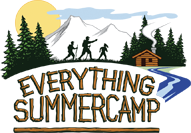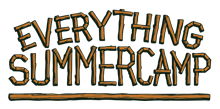Hey, Swingers!
Such a simple contraption, hammocks are nothing more than a sling made from an assortment of fabrics which you suspend at both ends, fastening them to trees, posts, or anchored hooks. Nevertheless, these simple inventions have their own holiday: today—National Hammock Day. In past posts, I’ve covered the history of hammocks as well as they’re inarguable convenience and comfort.
Definitely don’t let the simplicity of hammocks fool you; they provide a plethora of purposes that you can employ and enjoy! Here’s a few easy ones: 
Meditation
More often than not, outdoor activities call for lots of ‘doing’. Be sure to enjoy your time outside with some good old-fashioned non-doing. Hanging out in a hammock is a great time to focus on breathing (through your nose is best) and meditate on the simplicity of existence.
Relaxation
The suspension and gentle sway of your hammock on a breezy day is the ticket to an awesome nap in your hammock. When you’re looking to relax, there is no better means than hanging a hammock and drifting away. Lose yourself in a daydream, a good book, some solid sleep, or whatever else helps you relax!
Education
Cozier than a classroom, hammocks can be conducive to learning. Promoting focus, they make a cool setting for you to learn a thing or two when you crawl inside with your schoolbooks or personal research. Get smarter while staying comfy and hit the books inside a hammock.
We offer awesome hammocks and hammock hanging accessories from the quality Eagles Nest Outfitters brand name. You can check out our ENO selection by clicking here. Enjoy National Hammock Day by spending some of your day in a hammock if you can. Meditate, relax, and learn some stuff while you keep cozy and, as always, thanks for reading, Camp Fans!
- John




 however, most people logically suspect that it was formed as a means of bringing balance to October 16. National Boss’ Day was registered by a woman named Patricia Bays Haroski in 1958. But as the day’s popularity rose and rose, employers began Employee Appreciation Day to return the favor.
however, most people logically suspect that it was formed as a means of bringing balance to October 16. National Boss’ Day was registered by a woman named Patricia Bays Haroski in 1958. But as the day’s popularity rose and rose, employers began Employee Appreciation Day to return the favor. 

